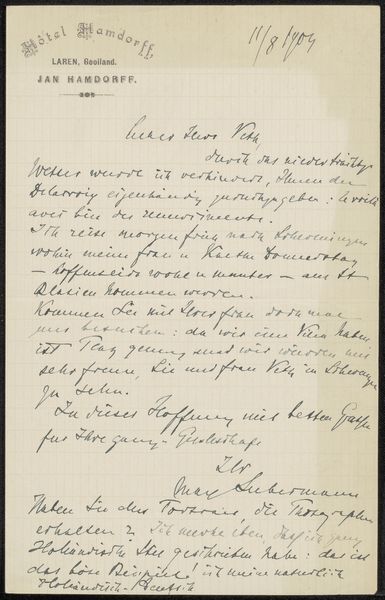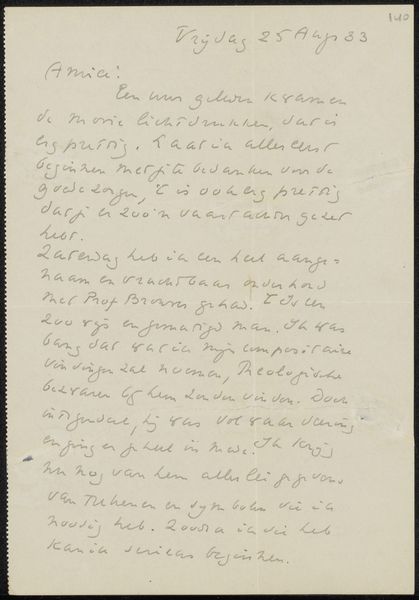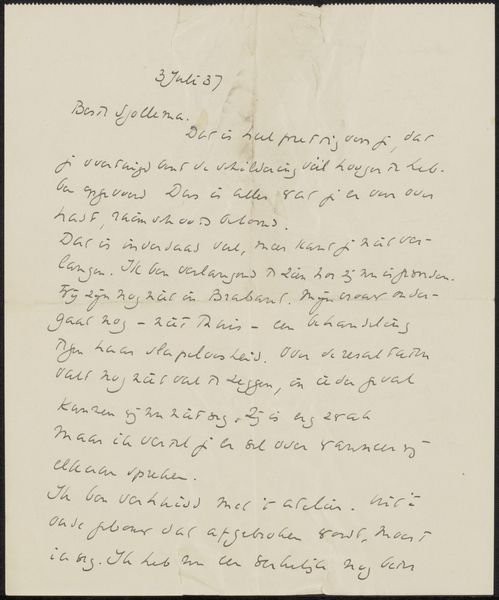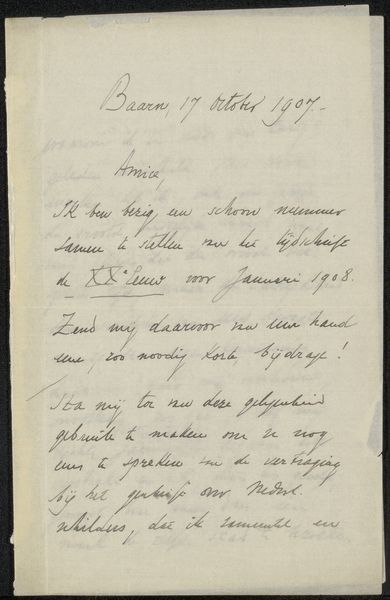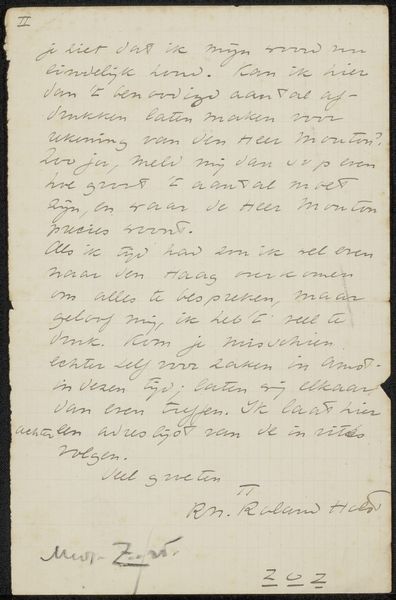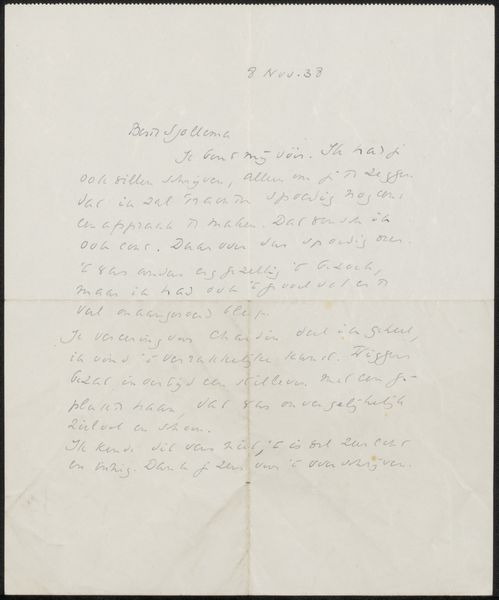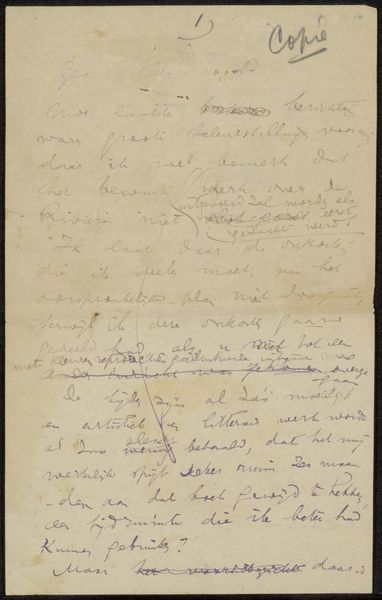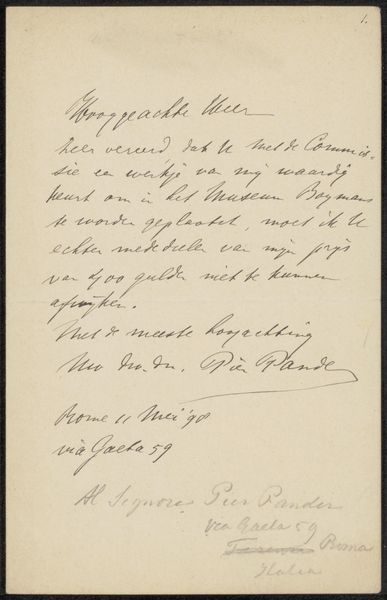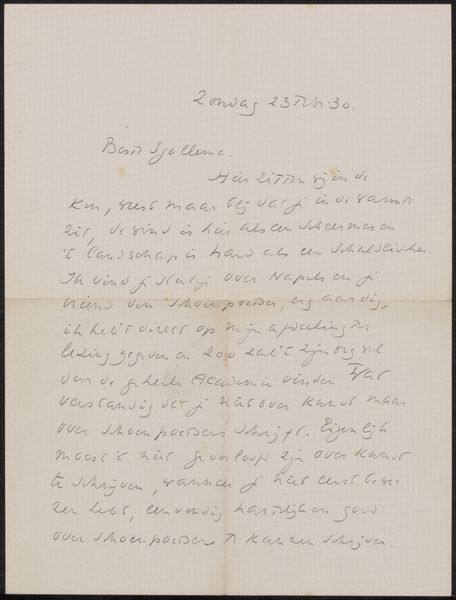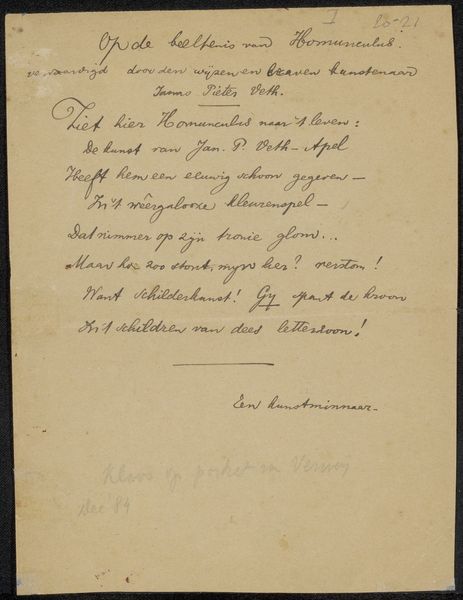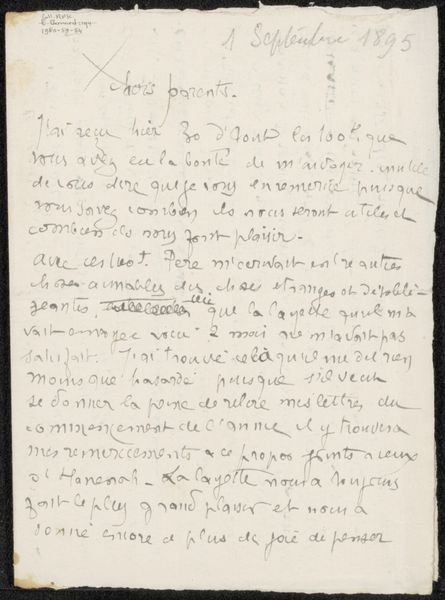
drawing, paper, ink
#
portrait
#
drawing
#
paper
#
ink
#
modernism
Copyright: Rijks Museum: Open Domain
Curator: This is a piece by Richard Nicolaüs Roland Holst, known as "Brief aan Joop Sjollema," or "Letter to Joop Sjollema" dating from possibly 1932 to 1937. It's ink on paper, currently held here at the Rijksmuseum. Editor: My first thought is intimacy. The slightly yellowed paper and delicate script feel like a private communication we’re not meant to see, a stolen moment in time. Curator: Roland Holst moved within socialist circles, and this letter is one trace of those political and personal connections. Its very existence prompts us to consider the roles of friendship and correspondence within artistic and intellectual communities. Editor: From a formal standpoint, the slant of the handwriting pulls the eye diagonally across the page, and the varying pressure of the ink creates a sense of rhythm and emphasis. Notice the loops and flourishes of the handwriting style which lends the piece a calligraphic elegance, even if it's just a personal note. Curator: Precisely. The letter is more than mere content; it's also a material artifact shaped by specific cultural practices of communication. We can imagine how Joop Sjollema, the recipient, a known writer of that time, might have interacted with the letter, and how it would have informed his world view and socio-political thinking. Editor: Do you think the informal nature of the script speaks to the modernist inclination of capturing stream-of-consciousness type feelings of an unedited human sentiment? Or is it more a necessity for informal correspondence? Curator: I think, considering Roland Holst's political involvement, that it underscores a desire for directness, an authenticity that aligned with socialist ideals. But it could also have something to do with its functionality! Editor: Right, there is an intrinsic function for correspondence as a direct communication method which may not require ornamentation to be considered proper, while something with artistic purpose might consider all elements for the intended impact. Curator: It’s a powerful example of how even a simple note can illuminate a historical context and offer insight into the lives and values of those involved. Editor: It makes you reflect on the interplay between form and content, and on what these sorts of seemingly unassuming pieces of ephemera can tell us about an individual artist’s wider aesthetic preoccupations.
Comments
No comments
Be the first to comment and join the conversation on the ultimate creative platform.
